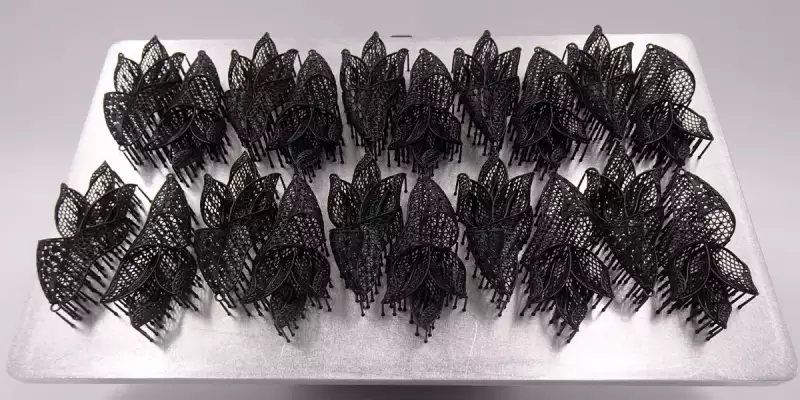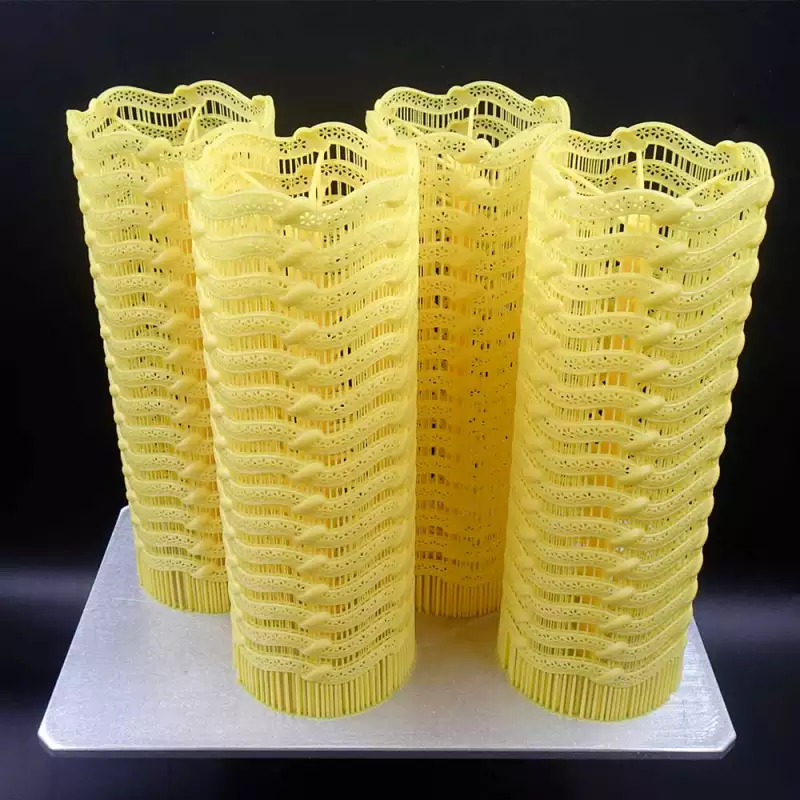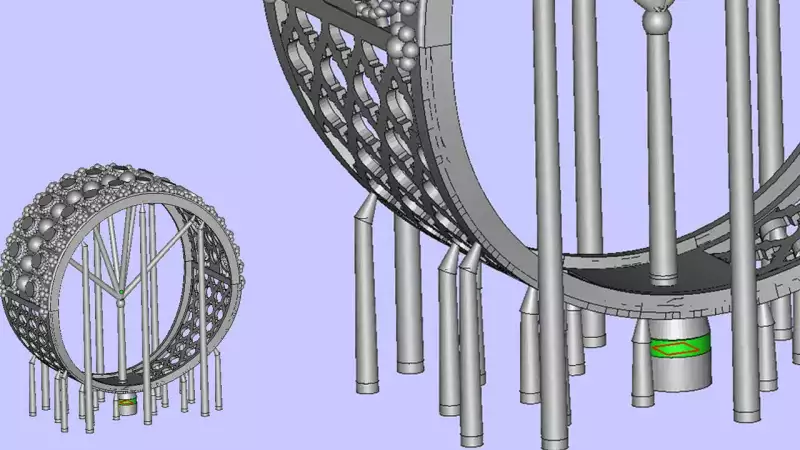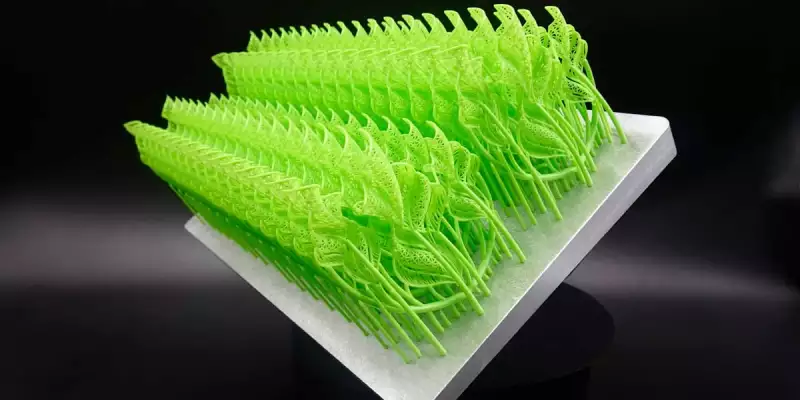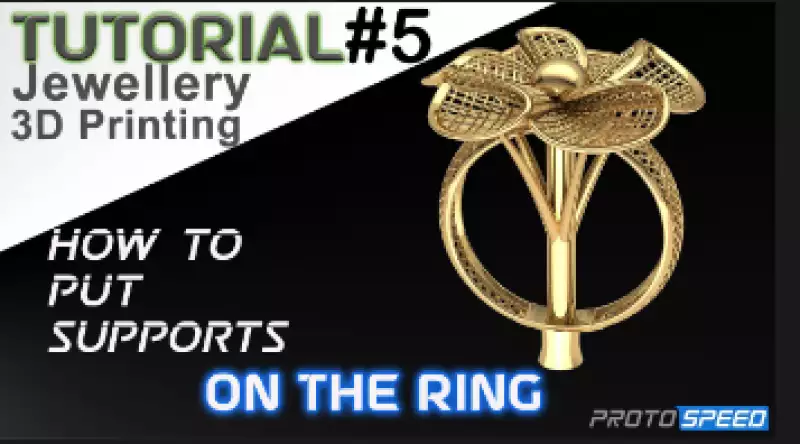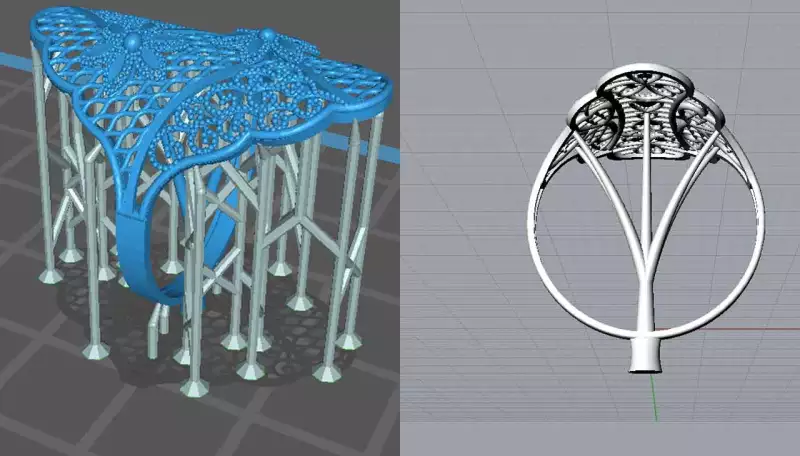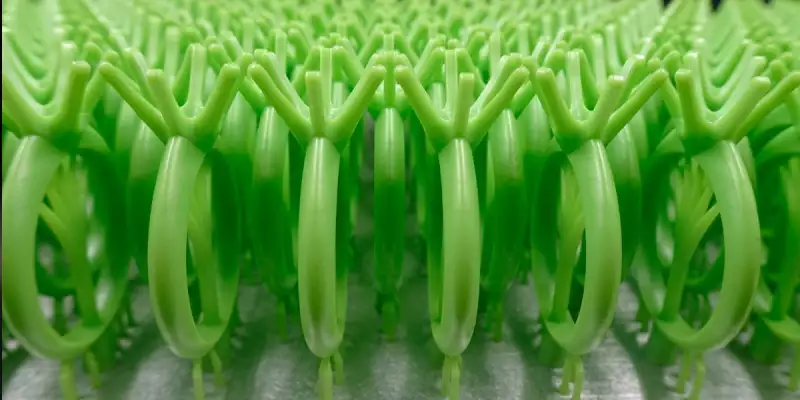In 3D printing, the ability of a 3D print's first layer to firmly stick to the build surface or print bed is known as "build platform adhesion." It is an essential step in the 3D printing process because it guarantees that the printed object will remain securely in place while the printing is being done. Proper build platform adhesion is essential for preventing issues such as warping, lifting, or misalignment of layers.
3D Printing for Jewelry
Based on current jewelry trends of Middle East & South Asia. Most jewelry manufacturers require light weights and prefer geometrically complex patterns that are not possible without 3D Printers. 3D Printers are able to print different variations with precision while enabling high production based on the speed & build platform size. Bangle are now being 3D Printed with different methods depending upon the specific requirement of the Jewelry Manufacturers.
The development of 3D printing technology has completely changed the jewelry-making process, giving designers creative flexibility to realize sophisticated and unique creations. But the 3D print isn't the end of the process. Jewelry models need to be carefully cleaned after 3D printing to create a perfect, polished final result. To achieve perfect casting results, it is important that Jewelry Models printed with Cast-able Resins are washed with the right solvent and no residue either of the Resi
Given that STL is widely accepted by various software programs for applications like computer-aided manufacturing, rapid prototyping, and 3D Jewelry printing, ensuring the integrity of STL files becomes paramount. The success of 3D printing endeavors hinges on the avoidance of faults and inconsistencies that may arise in STL files. Consequently, the imperative nature of rectifying STL files before initiating the printing process becomes evident. Within the dynamic landscape of computer-aided des
Now with the advent of 3D printing in jewelry Industry they can be manufactured using Additive Manufacturing Techniques. Cuban Chains can now be printed with 3D Printers using Castable Resins and can be casted into precious metals using the method of Lost Wax Casting. With CAD software’s such as Rhino & Gemvision Matrix we can even create Hollow chains.
In this blog, we are going to take an interesting trip into the complex world of 3D printing and jewelry design. We'll reveal the techniques for skillfully positioning supports on a stunning locket set consisting of gorgeous pendants and earrings. Our goal is to lead you through a flawless casting and printing process so that your creations are just as beautiful in real life as they are in your dreams.
This lesson is brief but effective. When it comes to 3D printing jewelry, designers frequently turn to a variety of techniques, such as sketching casting sprues or trees, or using Bell support functions. But now that GV3D printing commands are accessible in programs like Gemvision Matrix and Rhino, we can greatly streamline this procedure, guaranteeing user-friendliness and saving a ton of time.
The purpose of support structures is to prevent deformation and crumbling. Efficient support structure implementation is critical in jewelry design, where delicate features and complex designs are common. Ignoring this can lead to errors in printing, distorted features, and a general lack of accuracy in the finished product.
In the field of jewelry, 3D printing has grown into a more common solution. The new technology opens up a lot of new opportunities for jewelry creation while also allowing for flexibility and creativity. The art of making jewelry has changed over time, and technical improvements have greatly contributed to its evolution. 3D printing is one of the recent revolutionary developments in jewelry production.
APPLICATIONS AND BENEFITS OF DLP 3D PRINTING FOR JEWELRY

